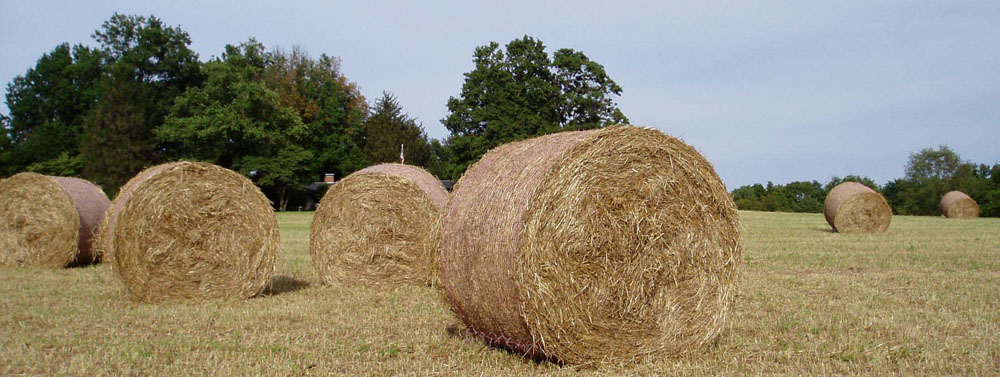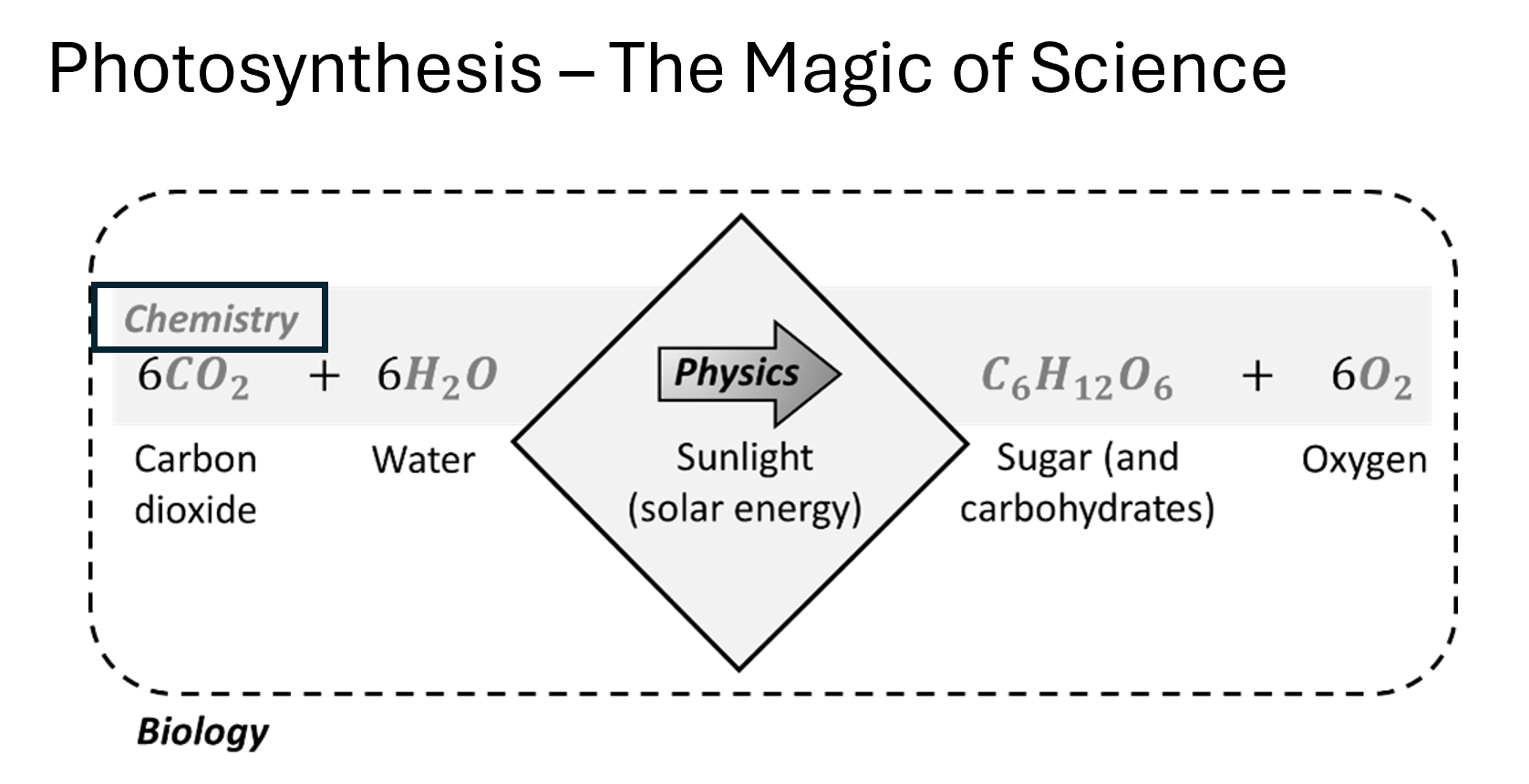Plant Based Energy Values – The Science of Harvesting the Sun
The emerging bioeconomy is effectively starting at the system level and moving down to individual market activities. A constant for millions of years is photosynthesis. It captures solar energy – everyday for millions of years – and converts it to carbohydrates. Through all the changes in agricultural technology, biotechnology, local food preferences, it is difficult to prepare college freshmen for jobs they will take after their 4-year degree that likely did not exist when they began. One constant, that will remain the same is green plants convert solar energy – photons – into chemical energy of sugars.
Bioenergy is a relatively new thing in the US economically speaking, but plants have been powering our lives forever. This graphic illustrates the equation for photosynthesis. There are two impressive things about this process: 1) plants convert carbon dioxide (CO2) to oxygen (O2) for us to breath, and 2) the carbon (C) in the carbon dioxide (CO2) with energy from the sun and water gets turned into sugars.
Trying to label this as biology, or chemistry, or physics, doesn’t work because all three of these disciplines happen in this simple relationship. Corn and soybean leaves are biologically grown solar receptors. Green plants are the factory. The transfer of energy from the sun to the energy in carbohydrates is physics. And the accounting for the elements in the system (left side = the right side), is chemistry.
Agriculture is the science of harvesting the sun. It goes deeper than this. Fossil fuels are plants that rotted and have been stored deep in the Earth for millions of years. So it is nothing new. The Department of Energy tracks energy consumption back to 1776. They identify the year 1885 as the pivot between the dominance of wood to the dominance of coal. It would be decades later before the United States moved away from horses for transportation and for horsepower in farming. The sun warms the earth, soils, and evaporates future rainfall. These ambient energy benefits are not recorded in the markets.
As mentioned recently, Biomass Rules is rebuilding their energy value models. There are numerous nuances and layers to covert livestock feed into a conventional transportation fuel equivalency. It is pretty nerdy. But the cool part is that it is both natural and not new. The simplicity is magic.
In an economy, a unifying metric is dollars ($). If we can get everything to the same unit, it is possible to get a relative sense about how very different value streams interact relative to their dollar value. The constructed unit of $/MMBTU used in the Biomass Rules energy values is also a unifying measure. Comparing a cubic foot of natural gas to a cubic foot of coal or ethanol is counter intuitive. But by identifying the energy content, the product density, and the moisture content, it is possible to create relative relationships that are theoretically sound.
$/MMBTU is similar to a price, but it isn’t used for most markets as a price. It is more representative to call it a value. Instead of selling transportation fuel in terms of $/gallon, a volumetric unit, $/MMBTU is value per energy content unit. It does allow corn to be compared to natural gas or gasoline on an energy content basis. Visualizing the volumetric comparison is difficult, but that is not this objective.
Carbon intensities are another unifying measure. Like $/MMBTU it is also constructed. All these units: $/gallon, bushels per acre, and $/MMTBU are also capture output to input relationships. With carbon intensities, the objective of value is carbon. The market challenge today is first establishing reliable measures of carbon. We are at least 20 years into this adventure. It is clear that in 2024, much more is understood about establishing carbon activities than in 2004. The other counter-intuitive challenge with carbon intensities is whether the value is driven by benefits or costs. They both play a role here.
But constructed energy values, $/MMBTU, reflect more the energy value on non-energy transactions. Corn is interesting in that most folks don’t think energy content when they think of corn grain. Once it is converted into ethanol, it is a bit more intuitive. Now it is a transportation fuel. But dairy farmers feed corn silage, chopped up and fermented whole corn plants, to dairy cows to provide energy for milk production. There is a non-transportation value to livestock feeds. As we have learned with digesting manure and food waste into renewable natural gas (RNG) there is residual energy in all organic materials.
Evaluating energy contents of a wide variety of materials that originate from photosynthetic plants removes a market bias from historical practices and opens up a broader view. Stay tuned. Progress continues on upgrading the Biomass Rules energy value framework.



Comments
Plant Based Energy Values – The Science of Harvesting the Sun — No Comments
HTML tags allowed in your comment: <a href="" title=""> <abbr title=""> <acronym title=""> <b> <blockquote cite=""> <cite> <code> <del datetime=""> <em> <i> <q cite=""> <s> <strike> <strong>